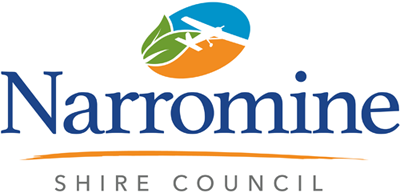Extractive Industry (Quarry) Developments
Extractive Industries (Quarry) require approval under the Environmental Planning & Assessment Act and Regulations.
The assessment and approval pathway for extractive industries development vary depending on various factors such as proposed extraction volumes and environmental impact. Refer Clause 19 Schedule 3 of Environmental Planning & Assessment Regulations.
| Extraction Volume/Year | Trigger | Requirements | Determination Pathway |
| Less than 30,000tonne/year | EPA & Act | EIS* & BAR** | Local |
| GReater than 30,000tonne/year | Schedule 3 - Designated Development | EIS* & BAR** | Joint Regional Planning Panel (JRPP) |
* Environmental Impact Statement ** Biodiversity Assessment Report
Any new, expansion and/or Re-opening of any disused or inactive quarry (with or without previous lawful consent) is subject to a Development Consent and compliance with EPA Act, including designated development requirements, if applicable.
Biodiversity Offset Scheme
Biodiversity offset scheme is applicable to all quarry development applications and therefore must be accompanied by a Biodiversity Assessment Report (BAR) prepared in accordance with Biodiversity Assessment Method (BAM).
Designated Development Requirements (19/03/2018)
19 Extractive industries
- Extractive industries (being industries that obtain extractive materials by methods including excavating, dredging, tunnelling or quarrying or that store, stockpile or process extractive materials by methods including washing, crushing, sawing or separating):
- that obtain or process for sale, or reuse, more than 30,000 cubic metres of extractive material per year, or
- that disturb or will disturb a total surface area of more than 2 hectares of land by:
- clearing or excavating, or
- constructing dams, ponds, drains, roads or conveyors, or
- storing or depositing overburden, extractive material or tailings, or
- that are located:
- in or within 40 metres of a natural waterbody, wetland or an environmentally sensitive area, or
- within 200 metres of a coastline, or
- in an area of contaminated soil or acid sulphate soil, or
- on land that slopes at more than 18 degrees to the horizontal, or
- if involving blasting, within 1,000 metres of a residential zone or within 500 metres of a dwelling not associated with the development, or
- within 500 metres of the site of another extractive industry that has operated during the last 5 years.
- This clause does not apply to:
- extractive industries on land to which the following environmental planning instruments apply:
- maintenance dredging involving the removal of less than 1,000 cubic metres of alluvial material from oyster leases, sediment ponds or dams, artificial wetland or deltas formed at stormwater outlets, drains or the junction of creeks with rivers, provided that:
- the extracted material does not include contaminated soil or acid sulphate soil, and
- any dredging operations do not remove any seagrass or native vegetation, and
- there has been no other dredging within 500 metres during the past 5 years, or
- extractive industries undertaken in accordance with a plan of management (such as river, estuary, land or water management plans), provided that:
- the plan is prepared in accordance with guidelines approved by the Secretary and includes consideration of cumulative impacts, bank and channel stability, flooding, ecology and hydrology of the area to which the plan applies, approved by a public authority and adopted by the consent authority and reviewed every 5 years, and
- less than 1,000 cubic metres of extractive material is removed from any potential extraction site that is specifically described in the plan, or
- the excavation of contaminated soil for treatment at another site, or
- artificial waterbodies, contaminated soil treatment works, turf farms, or waste management facilities or works, specifically referred to elsewhere in this Schedule, or
- development for which State Environmental Planning Policy No 52 - Farm Dams and Other Works in Land and Water Management Plan Areas requires consent, or
- maintenance dredging of alluvial material from oyster leases and adjacent areas in Wallis Lake, but only if the dredging is undertaken in accordance with the document entitled Protocol for Wallis Lake Oyster Lease Maintenance Dredging approved by the Secretary and published in the Gazette, as amended by the Secretary from time to time by publication of an amended Protocol in the Gazette.
